Covering a Hatch Starts with Carrying the Right Flies
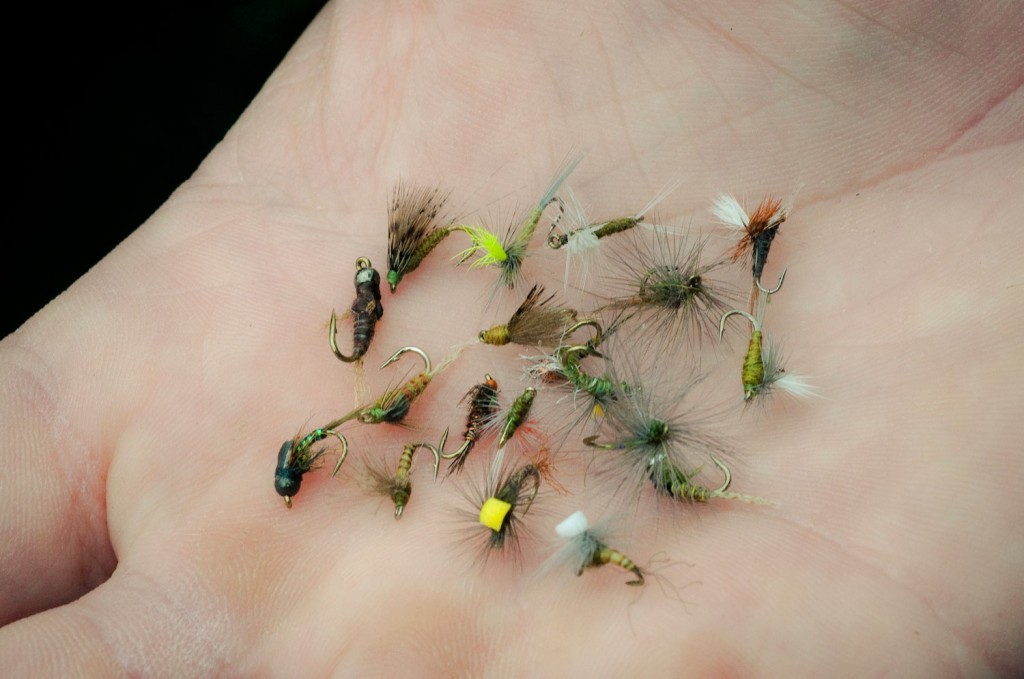
HAVE YOU EVER BEEN STANDING IN THE RIVER WATCHING A BIG HATCH UNFOLDING WITH RISING FISH ALL AROUND YOU, BUT FOR SOME REASON YOU CAN’T GET THE FEEDING FISH TO EAT YOUR FLIES?
Covering and owning a hatch starts with you first carrying the right fly patterns. When you know you’re going to encounter a specific hatch on the water, always carry multiple variations (colors, sizes) and stages (nymph, emerger, dun, spinner) to make sure you’re covered. Trout can get really picky during selective feeding.
This very situation happened to me last year running a guided float trip during an intense sulphur hatch. There was yellow everywhere, and fish were in a feeding frenzy, but the trout wouldn’t eat any of my sulphur patterns I tied on for my clients. Even my CDC go-to patterns that always work, were shunned by the feeding trout. I finally found a sulphur pattern after my seventh try that the trout consistently liked, and it saved the day. It ended up being nothing special, just a dun with in a slightly different color shade. The remainder of the float trip all I could think about was how important it was that I had so many different sulphur imitations on hand. It would have been a long quiet drive back if my clients witnessed an epic hatch with perfect conditions, and we ended up striking out on the water.
Your standard parahcute style dun with a small nymph dropper off the back will not always work. Below are some examples of other fly pattern options for rounding out your fly box and owning a hatch:
Drys
Parachute Style (with and without trailing shuck)
Traditional Style (palmered hackle)
Thorax Style (Palmered Hackle with hackle trimmed off on the bottom so pattern rides low on the water)
No Hackle Style (Just like it sounds, no hackle is used in the recipe)
CDC Style (CDC is substituted for
Read More »A Short Quick Cast
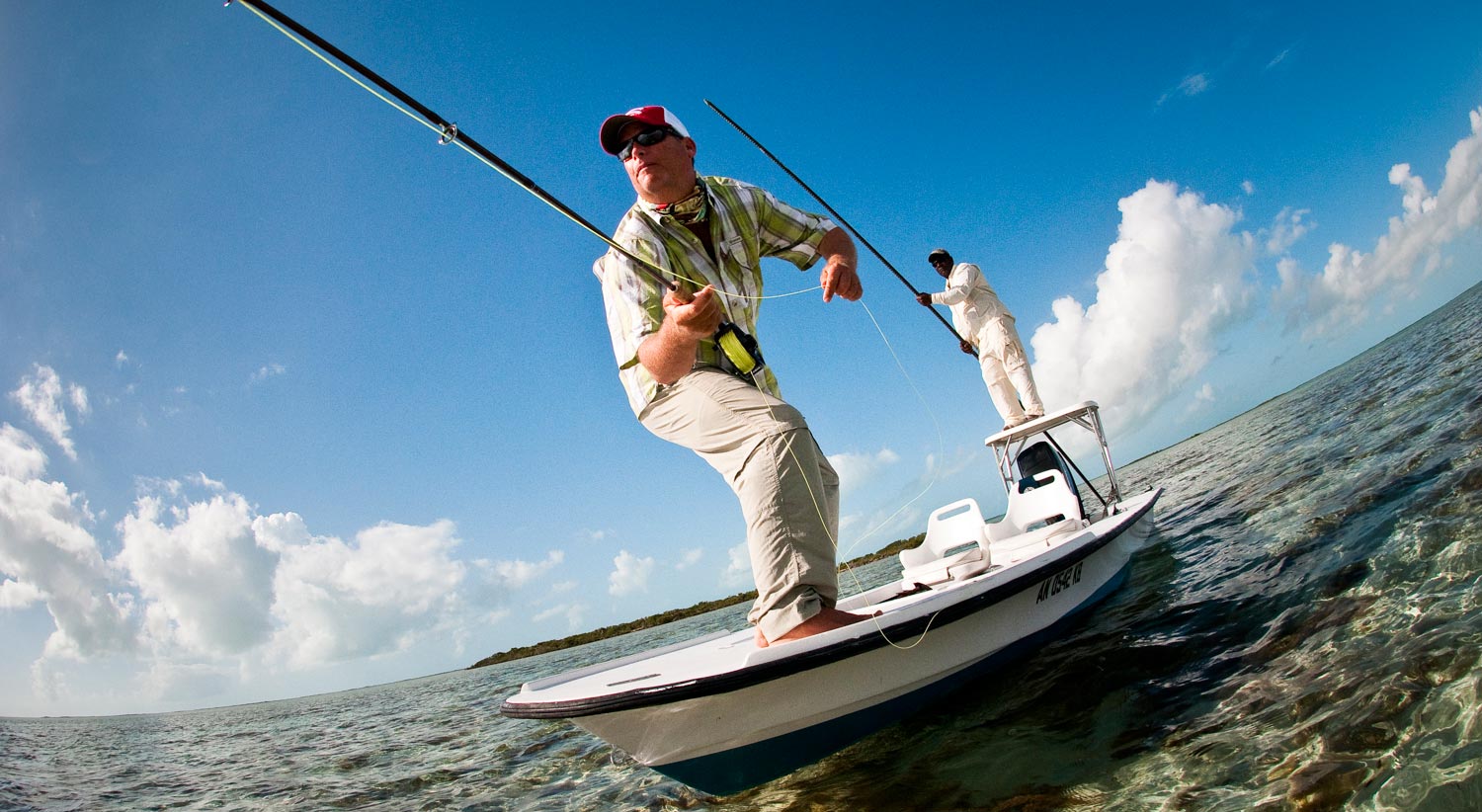
By Bruce Chard
MANY FLY ANGLERS THINK, IN ORDER TO BE SUCCESSFUL IN THE SALT, YOU NEED TO HAVE A GREAT DISTANCE CAST.
That can be true on a calm day when all fly anglers struggle to add another 5-10ft on their cast. But in reality the anglers that can get the fly where it needs to be within 50ft take advantage of a large number of their opportunities. Not only is accuracy a huge part of success in the salt, the most valuable asset is speed. If you can get the fly there fast with minimal movement, your odds of a hook up go through the roof.
Seeing and spotting fish for most fly anglers is challenging. Taking longer to find or see a fish frequently leaves anglers with a close shot. The problem that we run into here is lack of time. By the time the angler finally can get a visual on the fish, the amount of time left to act is simply not enough.
This is when a short quick cast is a must. You might be wondering, how hard can it be to make a short cast? You might be surprised how hard it is to lay out a 12-13ft leader with a heavy fly into a stiff 25 knot wind at 25ft.
The main reason for short shots not laying out straight is the lack of line or weight outside the end of the rod tip. Since you have to make a close shot, you can’t get enough line outside the tip to load the rod and make the cast.
SO HOW DO WE EFFECTIVELY AND EFFICIENTLY MAKE THIS CAST?
Loading only the Tip
Start by loading just the section of the rod that you need, to make your cast. One of the key essentials
Is That Fly a Nymph? A Look At Insect Life Cycles
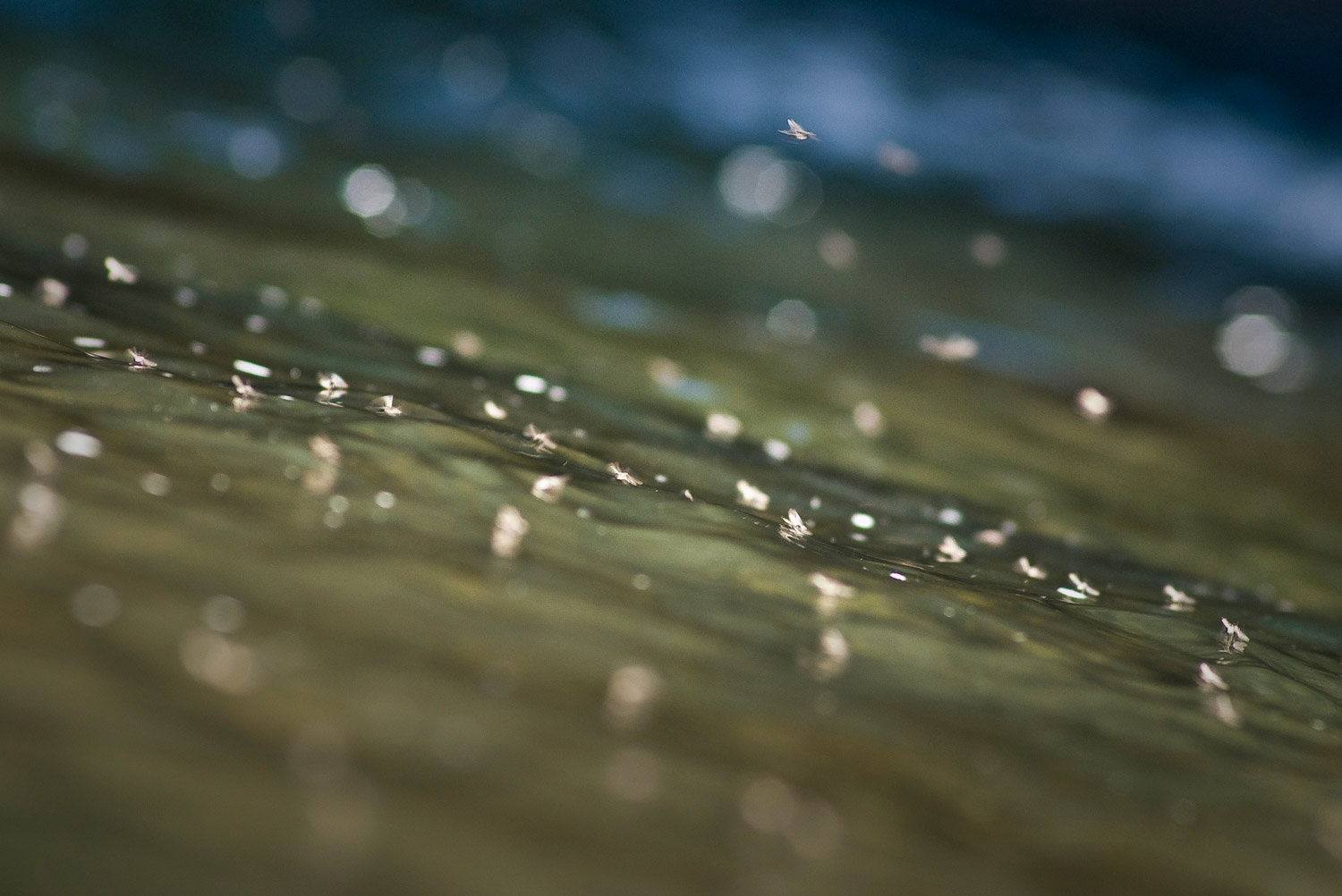
IS THAT FLY A NYMPH? THAT’S THE QUESTION I GOT FROM A READER THE OTHER DAY.
A fair question from a guy who’s only fly fished for redfish and isn’t familiar with trout flies. A simple question with a very complicated answer. Complicated enough that I figured it deserved an explanation, and why not share it.
The fly in question was a midge pattern, so technically not a nymph.
The word “nymph” however, like so many words, shares two meanings. The literal (denotative) meaning is a juvenile mayfly or stonefly in the subsurface phase of its life cycle. The word is also used to refer to flies that imitate these insects. Since a midge starts its life as a larva rather than a nymph, the flies that imitate them are not technically nymphs.
The word nymph also has a conversational (connotative) meaning. It is often used to refer to flies that are dead drifted below the surface. A San Juan Worm or an egg pattern is often referred to as a nymph because of the way they are fished. Some folks will use the term “wet fly” for any fly fished below the surface but this is not correct either. Wet flies are a specific style of fly intended to be fished in a different manner. So describing the midge fly as a nymph, while inaccurate, is not necessarily wrong. It can be fished as a nymph, connotatively.
I’m not generally one to engage in exercises of semantics but I believe there is more at stake here than clarity of the word. I know that when I first became aware of midge patterns many years ago, I was reluctant to fish them because
Read More »Fly Fishing with Stealth – 8 Common Mistakes
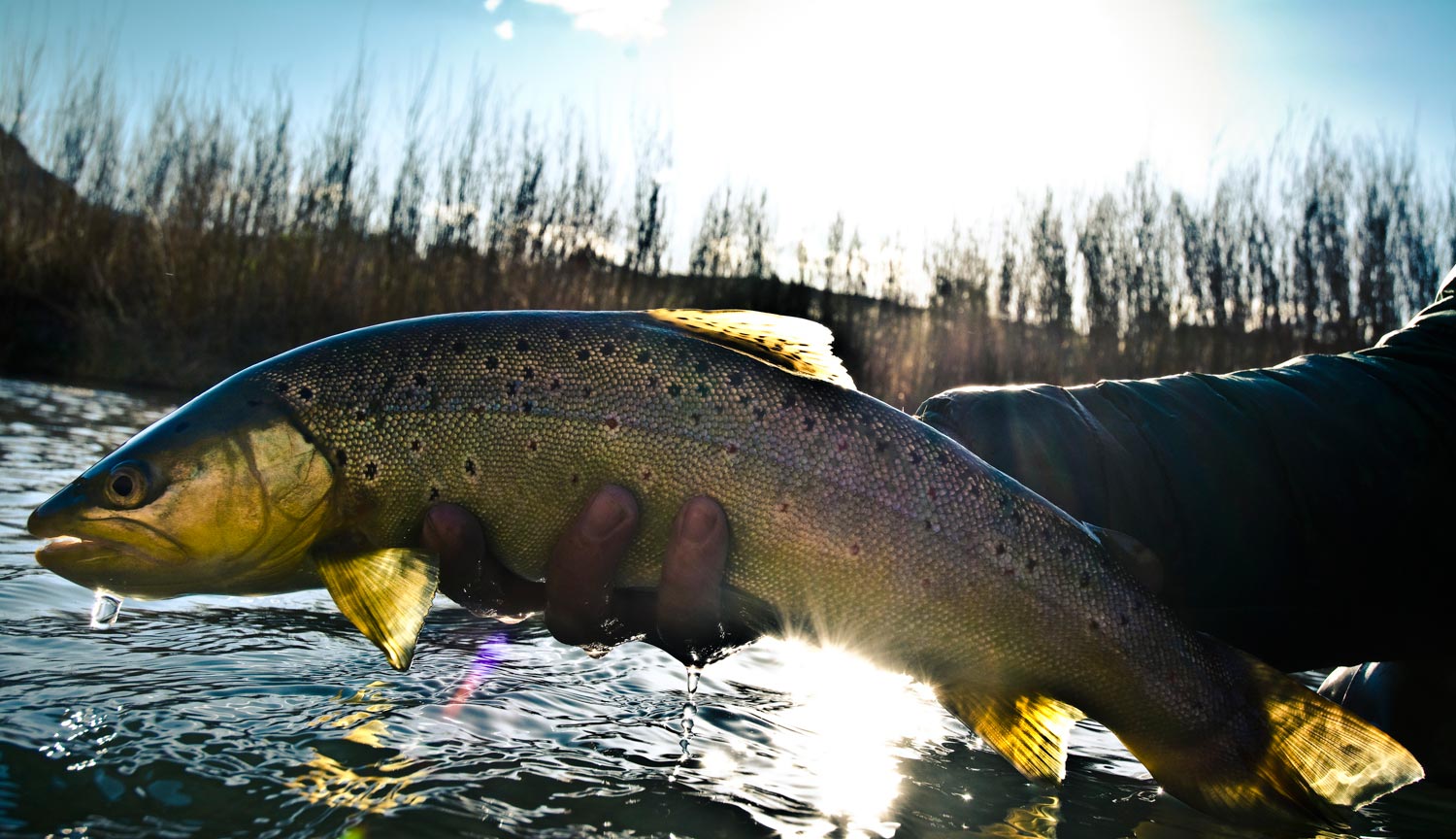
How often to you think anglers miss opportunities catching trout because of the lack of stealth?
The more educated trout populations are in a stream, river or lake you’re fly fishing, the more important it is for fly anglers to mimic the way a hunter stalks game in the field. I estimate that I give away upwards of 50% of my trout catching opportunities due to my lack of stealth. Below are 8 common mistakes fly anglers make on the water that blow their cover and success.
Read More »If You’re Not Looking For Trout, You’re Missing Out
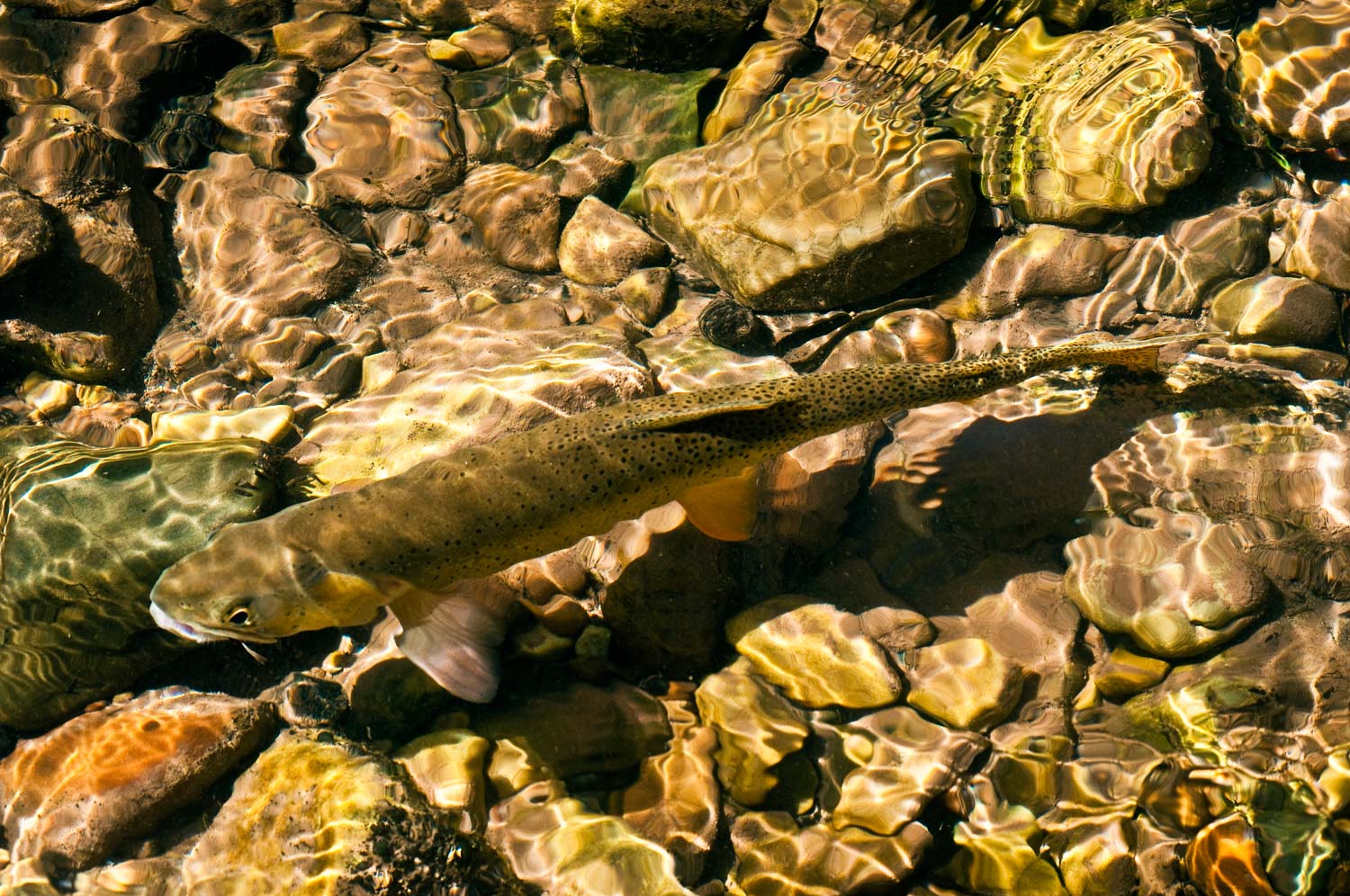
One of the things I always stress to my clients is the importance of always keeping an eye out for trout on the water. The first thing I do when I walk up to a prime piece of trout water, is take a minute or two to scan the water for dark shapes, shadows and subtle movements. I do it before I wet my fly or even my boots for that matter, because I know, if I can spot a trout, I’ll immediately double my chances at getting my rod bent. I also look for trout when I’m wading from one spot to the next. This is where many anglers mess up and get distracted by all the great looking water upstream of them, and then end up missing opportunities to spot and catch trout in transit. I used to spook a ton of trout myself moving from one fishing spot to the next. It still happens but not nearly as much because these days, when I’m on the move, I’m not in a hurry and I take plenty of time to look for trout as I wade.
You have to look for trout to spot them. They don’t shout, “hey, I’m over here”, or wave a white flag at you.
Read More »Fly Fishing: Is Guide Competition Good or Bad?
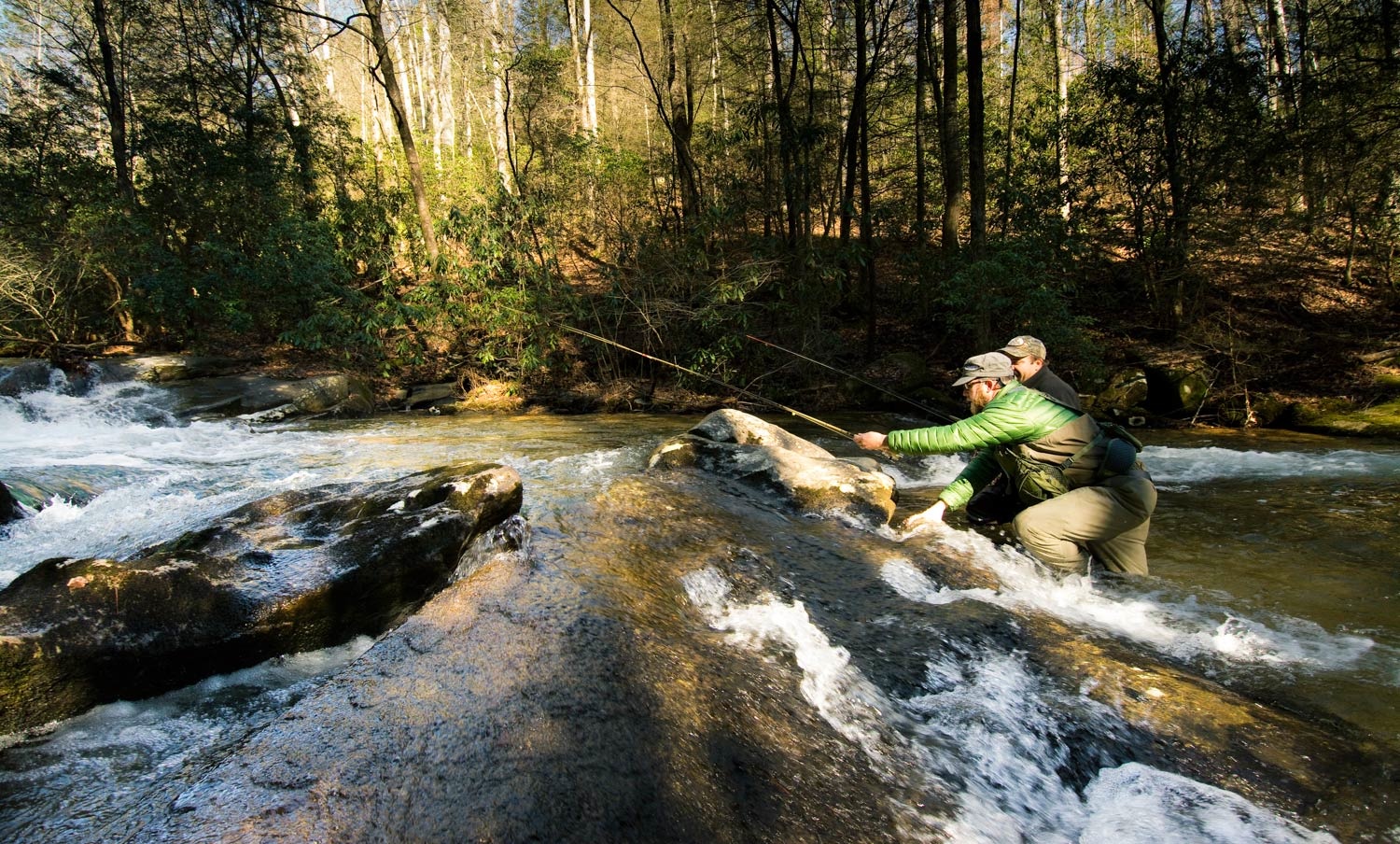
A few weeks ago, I chose to do something I never would have done, when I first started guiding. I made a point to accept an invitation from one of my local competitors to go fly fishing together. In the past, I would have passed the invitation up, thinking the competitor was trying to learn secrets of mine, or worse, had a hidden agenda aimed at harming my business, but that wasn’t the case at all. For a welcome change, we set aside all the nonsense of us worrying about being competitors, and for the first time, we genuinely got to know one another. We spent the day working our way up a beautiful section of wild trout water, and we took turns fly fishing, while the other watched and told memorable guide trip stories. It turned out to be a really fun day on the water. One I’m confident I won’t forget for a very long time.
In the end, ten years of insecurities and false perceptions had been put to rest after just four hours on the water fly fishing together. We both realized that we’d done nothing positive for our businesses by black balling and avoiding each other. In fact, we agreed that we probably ended up doing more harm, since there had been plenty of times over the years when we could have helped each other out in a pinch. During my 45-minute drive back home, I reflected on the day’s events and it made me think about how much stress I could have avoided over the years guiding, if I wouldn’t have spent so much time worrying about my competitors. It’s ok every now and again to keep track of what your competitors are up to, but you should never lose sight of the most important element of your business, which is the services you’re providing to your customers.
Read More »The Magic of Soft Hackles
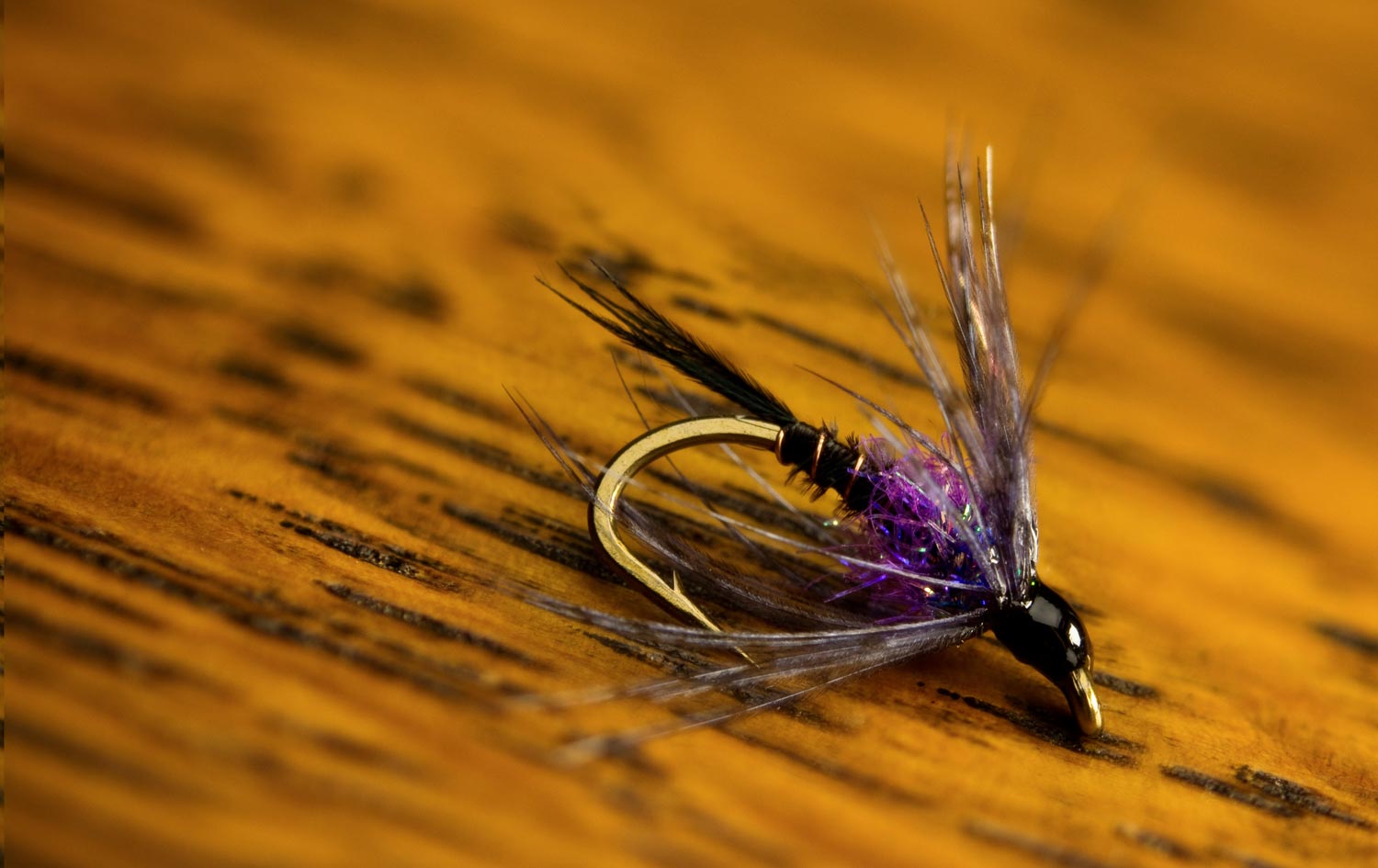
SOFT HACKLES ARE THE SHARKS OF THE FLY BOX.
Like the shark, the soft hackle is one of the oldest of its ilk, and like those ancient predators, it has evolved very little from its inception. Like the shark, it is a deadly design that could not be improved upon. Take, for example, the Kebari flies used by tenkara anglers for hundreds of years. Basically Soft Hackles with a reverse hackle. So effective, that traditional tenkara anglers only fish one pattern. Many modern fly anglers overlook traditional Soft Hackle patterns that are as effective today as ever.
There are two primary reasons for the effectiveness of the soft hackle. For starters, it’s the ultimate impressionistic pattern. It looks like almost everything on the aquatic menu. A fish who is looking for something specific is very likely to see it in a soft hackle. The second reason is, there’s just no wrong way to fish one. If you struggle with getting a drag free drift, a soft hackle is a very forgiving pattern. As long as it is in the water, it will produce fish.
FISHING SOFT HACKLES
As I said, there is no wrong way to fish these flies, but there are some proven tactics you can employ. For starters, dead drifting the fly as a nymph is never a bad plan. The Soft Hackle is as effective in this role as any pattern. That said, the dead drift does not take advantage of some of the pattern’s unique properties.
Perhaps the most common and most productive presentation for a Soft Hackle is the swing. The hackle has a tendency to trap an air bubble making the fly a natural emerger pattern. There are tying techniques, which I will go into, that enhance this effect. When fished deep and swung to the surface, the glowing air bubble inside the hackle is more than any trout can resist. One of my favorite ways to rig this pattern is to drop it about sixteen inches behind a Wooly Bugger with some weight in front of the Bugger. Drift the team deep through a run then lift them to the surface or quarter them down and across and let then swing and hold on.
When fishing from a boat, it’s very effective to cast a Soft Hackle straight across the current and retrieve it slowly, about four inches at strip. A hand-twist retrieve works well. This is also effective when teamed with a Bugger. Even more fun,
Read More »Fly Fishing in Gloves Gets Better with Time

DO YOU EVER FLY FISH IN GLOVES?
If you answered no, don’t make the mistake of thinking just because you tried fly fishing in gloves a couple times and couldn’t stand them, that you’ll always feel that way. Believe me, I been there, I used to be one of the haters myself. I’d rather have my fingers ice cold all day long than try to fly fish in gloves and feel awkward, clumsy and terrified I’m going to lose the fish of a lifetime. These things kept me from learning to fly fish comfortably in gloves for a very long time. It wasn’t until the last couple years that I’ve finally become comfortable fly fishing in gloves. In fact, it was my first steelhead trip to New York
Read More »When Rigging For Bonefish On The Fly, Less Can Be More
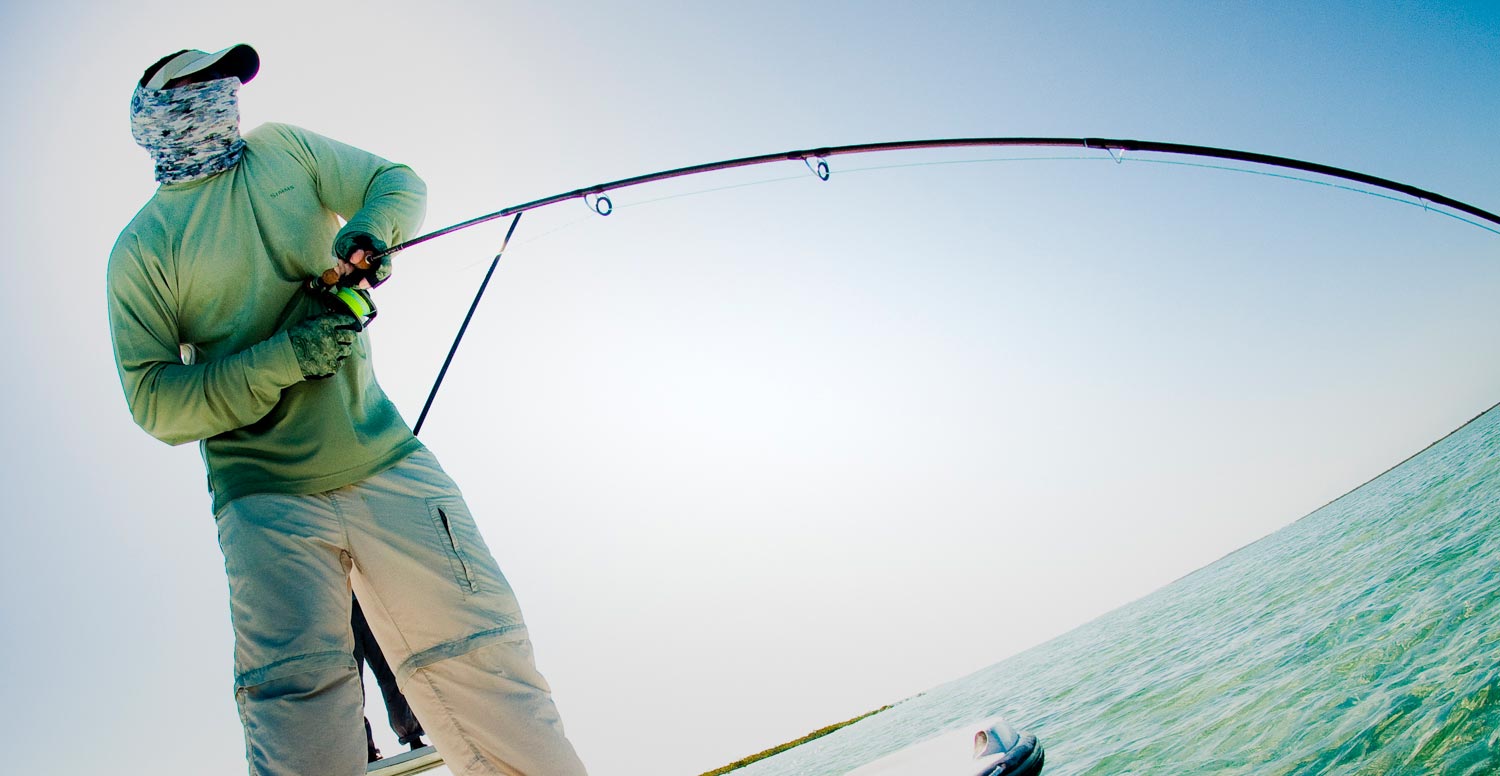
WHAT’S ALL THAT LINE REALLY DOING FOR YOU?
I got the chance recently to fish with my buddy Kristen Mustad from Nautilus Reels. I’m not sure Kristen ever fishes the same reel twice. And can you blame him? There’s always a new prototype to test and it is his job to never be satisfied with a reel. When Kristen lined up his new CCFX2 I noticed him doing something odd. He cut off about thirty feel of the back end of a brand new fly line. I had to ask way, and the answer made me rethink how I rig for bonefish.
“How often do you make a hundred and twenty foot cast?” Kristen asked me. “So the rest of the time, what’s that line doing? It’s creating drag in water when the fish cuts.” He makes a brisk gesture to the right with his hand to illustrate his point.
Bonefish are notorious for that. They will make a blistering run, putting you deep into your backing then make a ninety-degree turn. That’s often when they break off or straighten the hook. As they run at thirty-five mph, at ninety degrees to your line, all of that line is ripped through the water and the resulting pressure is far greater than the drag of your reel. It’s happened to me and it’s a bad feeling.
The pressure which the line puts on the fish is directly related to the diameter of the line. The thicker the line, the more pressure it puts on the fish and the greater the risk you will lose him. Fly line creates more drag than backing and that’s why Kristen cuts off the part of the line he’s not casting. Less fly line, less drag.
He takes it a step further though. Instead of using
Read More »Two Anglers Are Often Better Than One
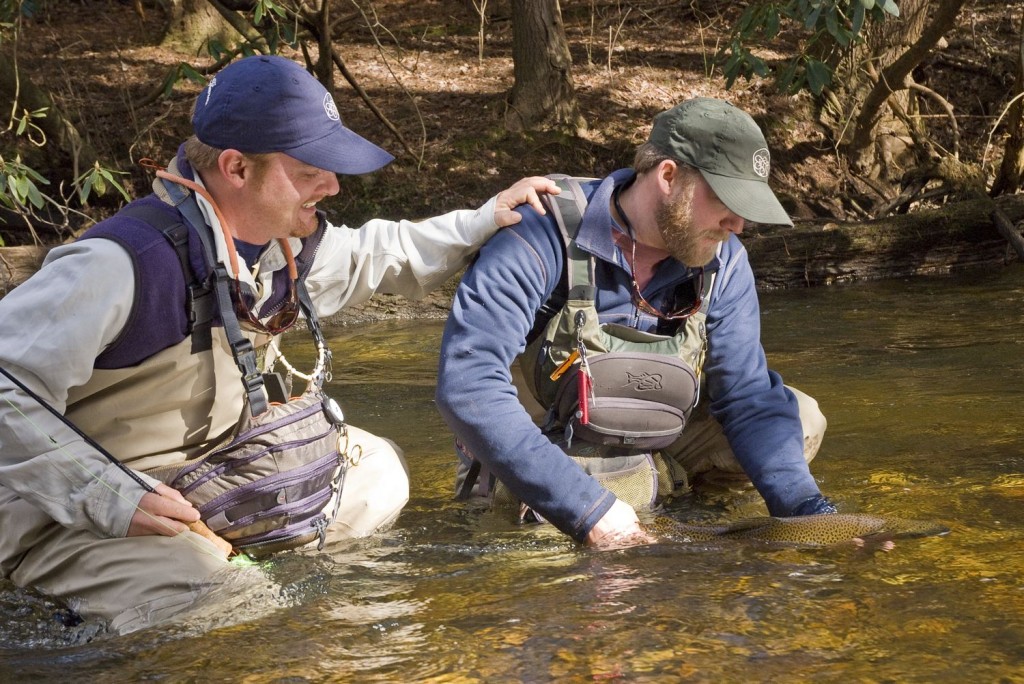
You can’t enjoy camaraderie on the water by yourself.
There’s no high-fives, no passing the victory flask around, and worst of all, it’s awfully hard to snap a quality photograph of you and a prized catch. Wait a minute, I take the latter back. It is possible to get a good photo by yourself if you’ve figured out a way to strap a tri-pod to your back and you’re also willing to lug it around all day. That being said, the main reason I think two anglers are often better than one, is because it allows you to work as a team, and that generally makes it much easier to find success on the water.
Louis and I have had pretty consistent success fishing together over the years. Even during really tough fishing conditions we generally find a way to put enough fish in the net during the day to call it a win. The biggest reason for this is because we’re always working together to decipher the fish code. Fishing as a team, we figure out what the fish are feeding on, where they’re primarily located, and what are the hot fly patterns. We make a point to never tie on the same patterns first thing in the morning, and quite often,
Read More »